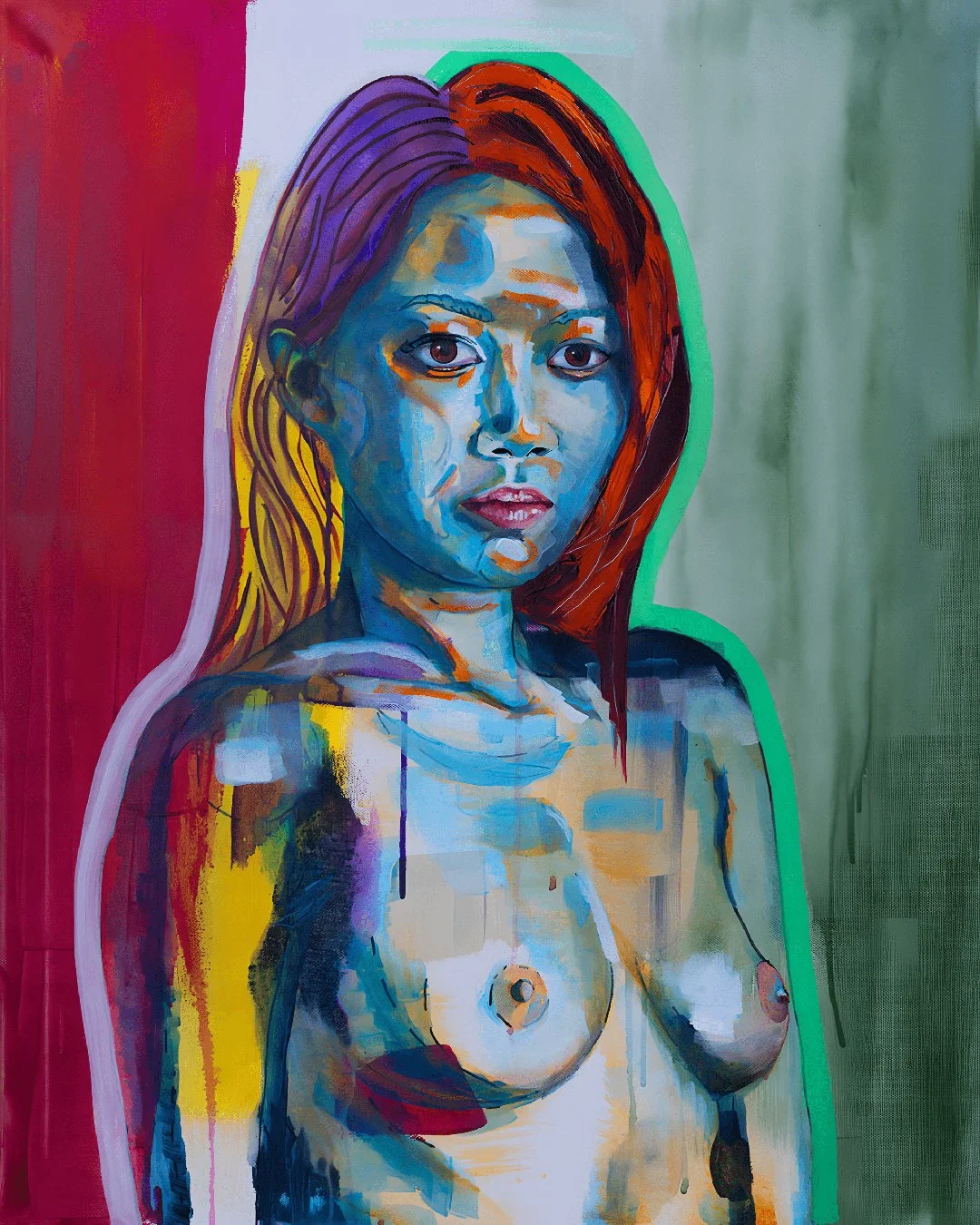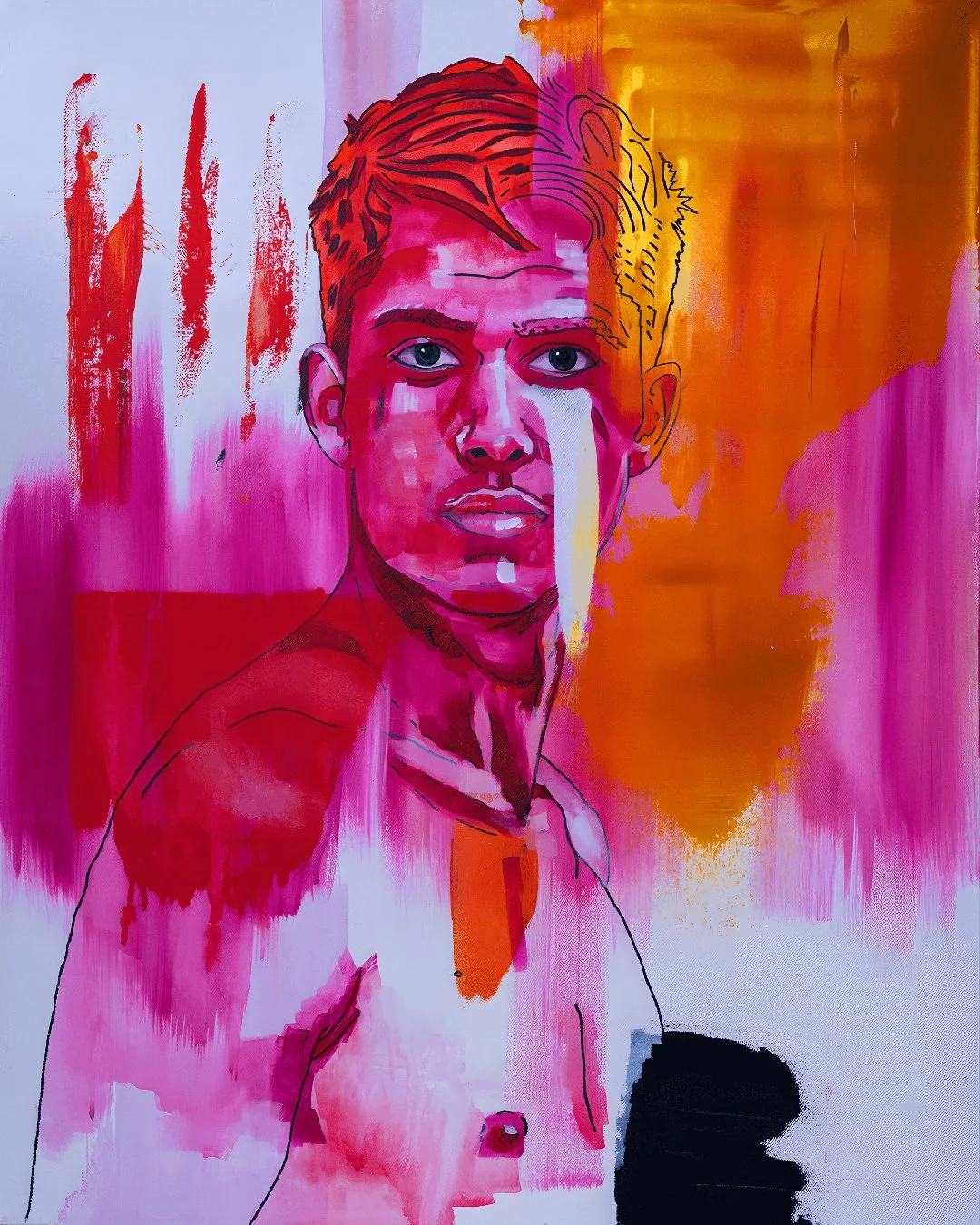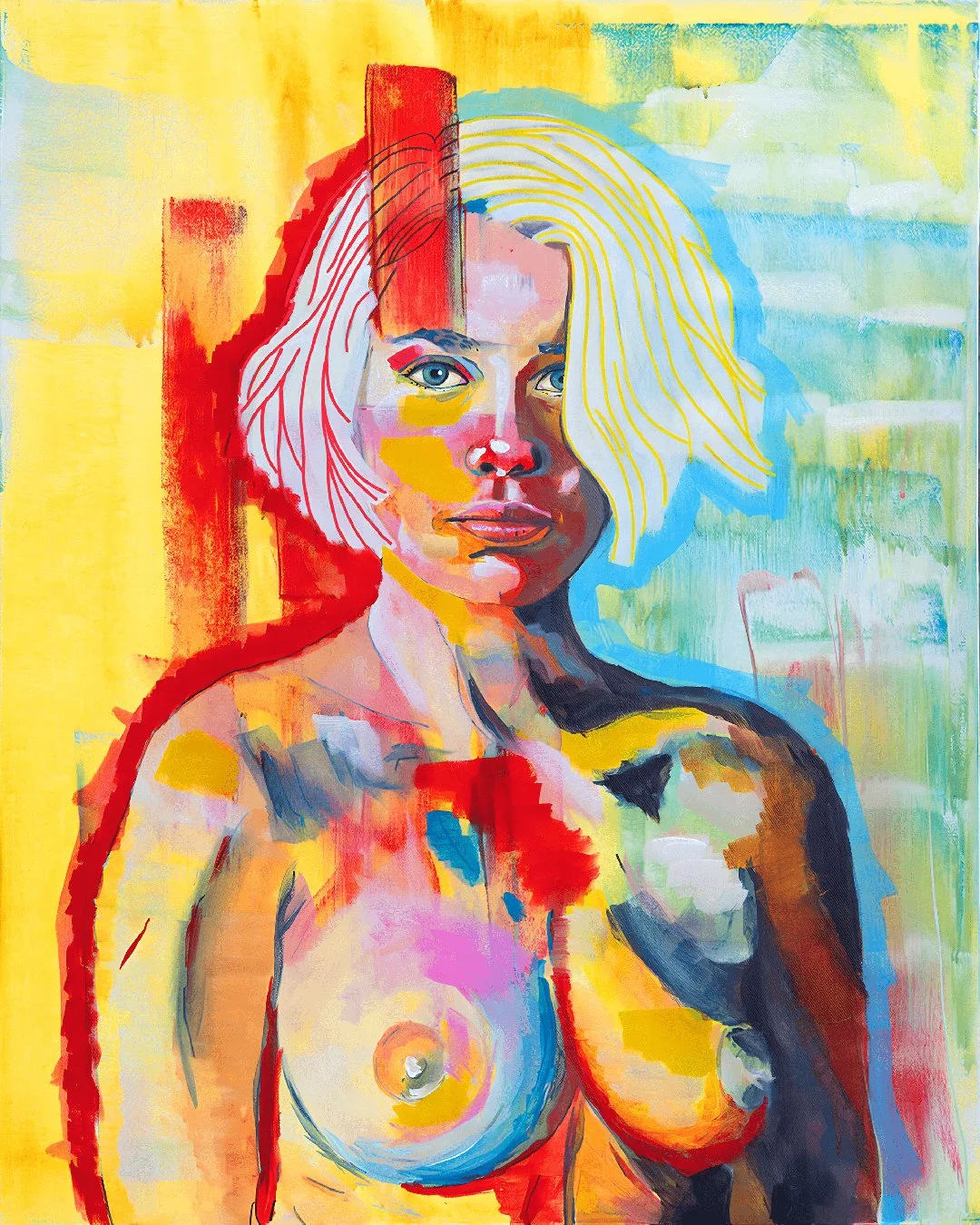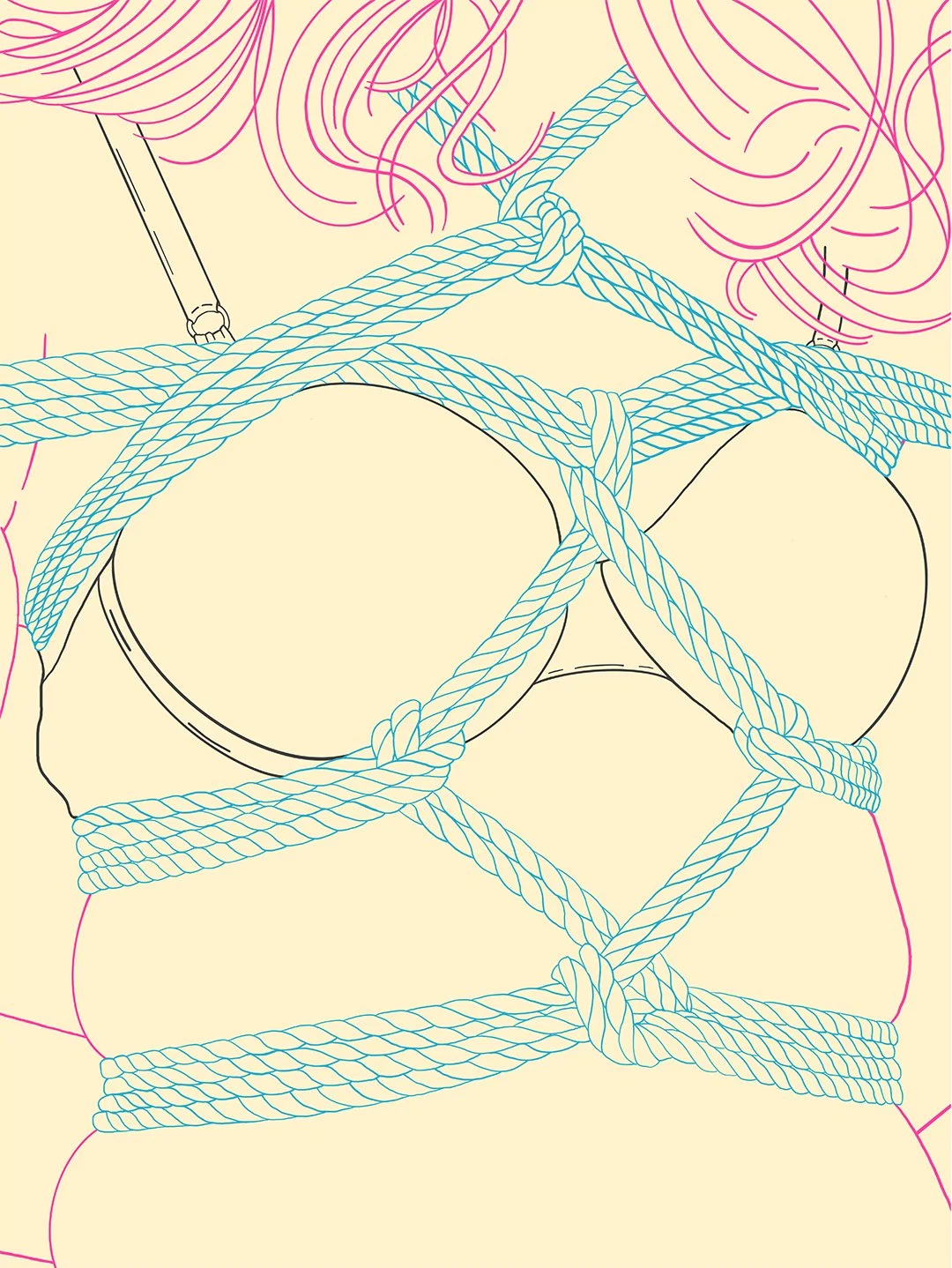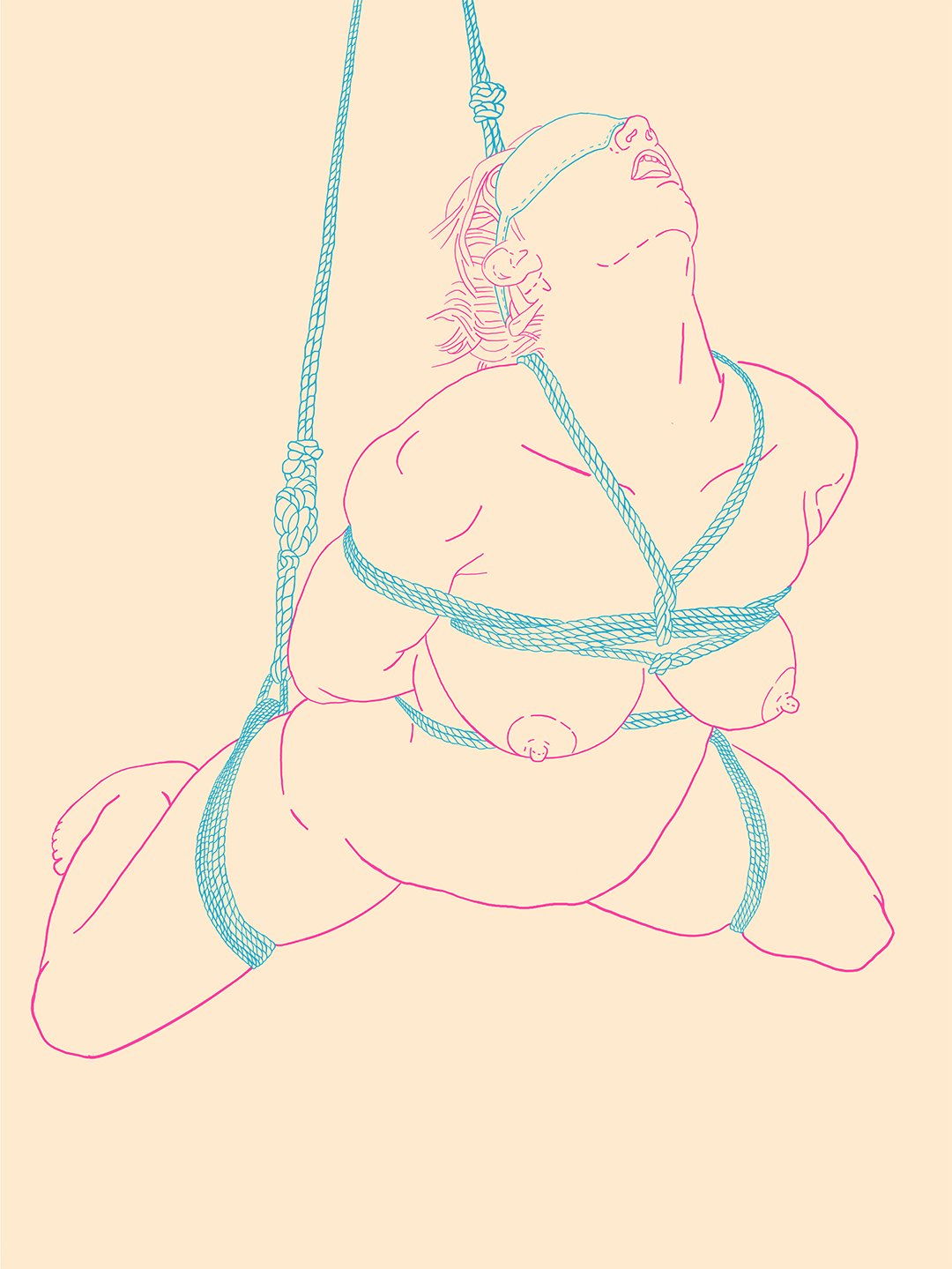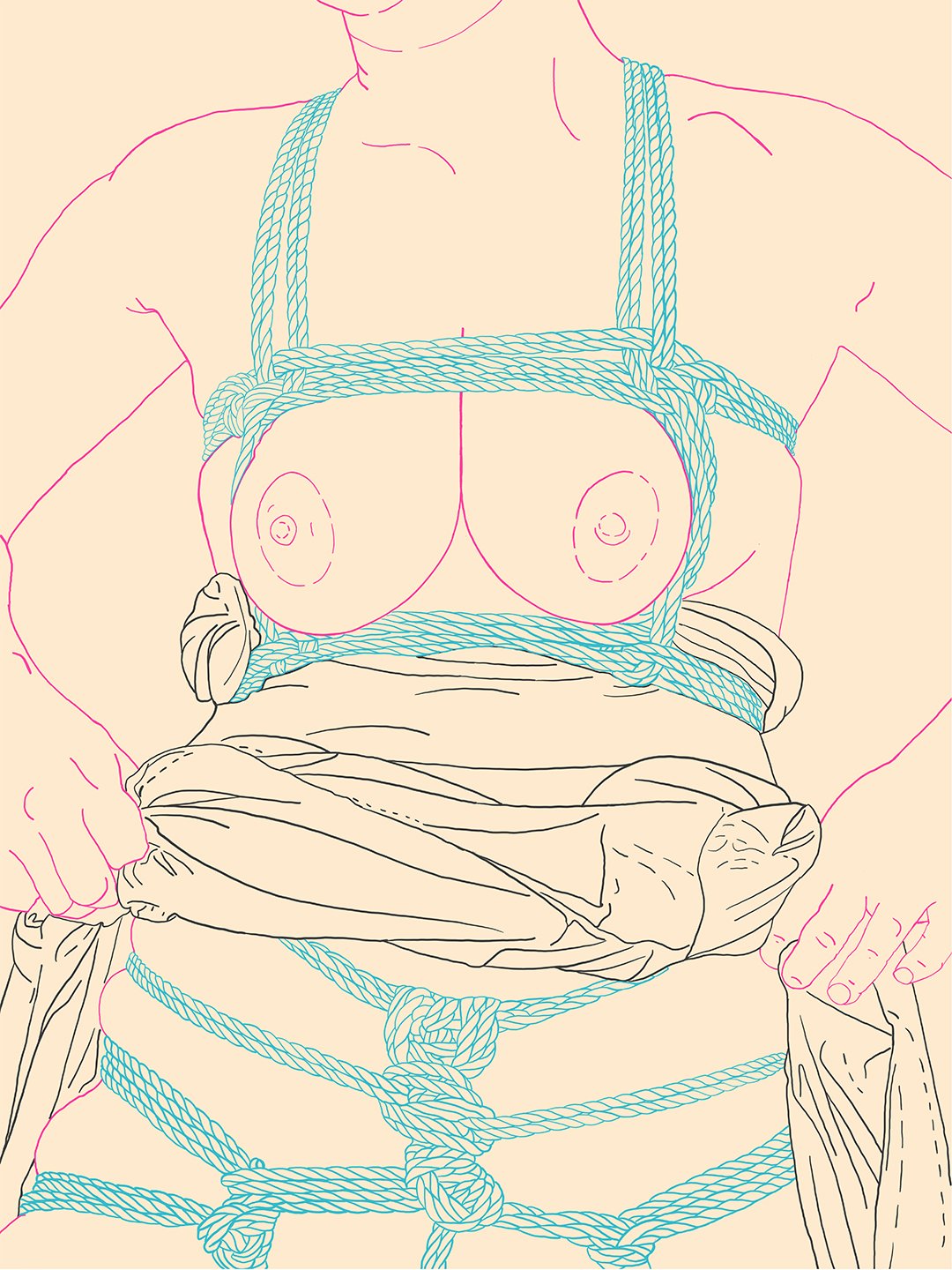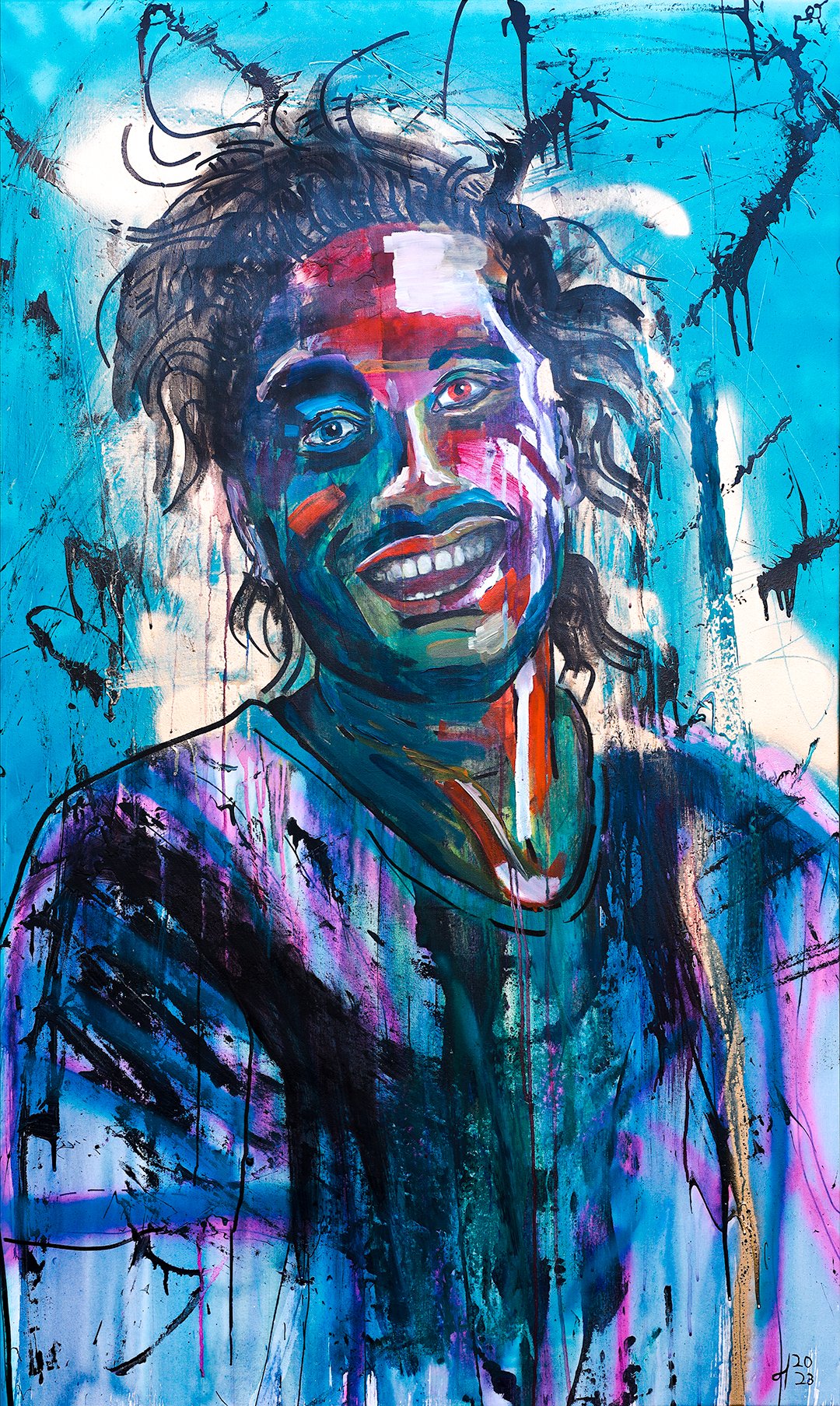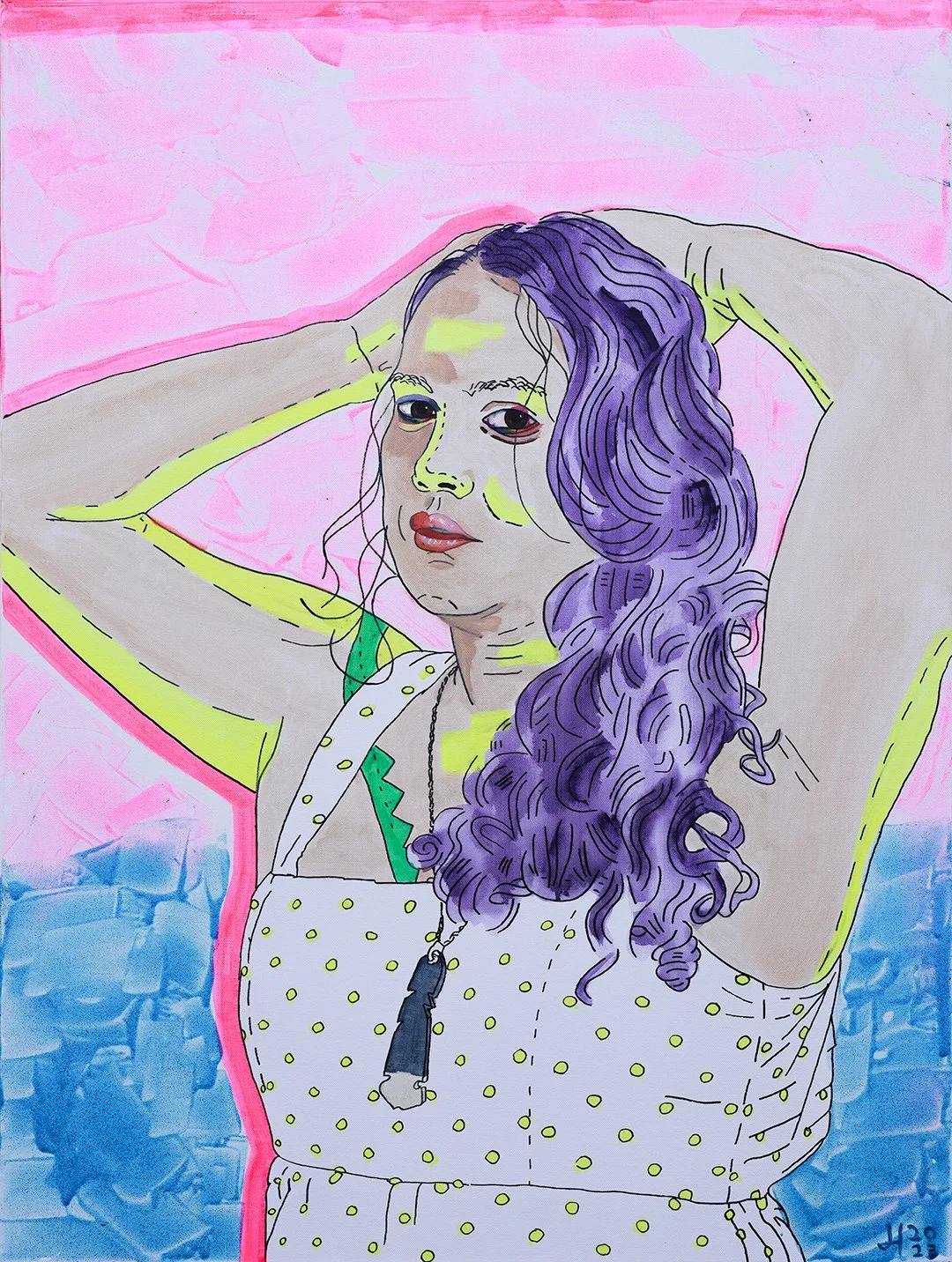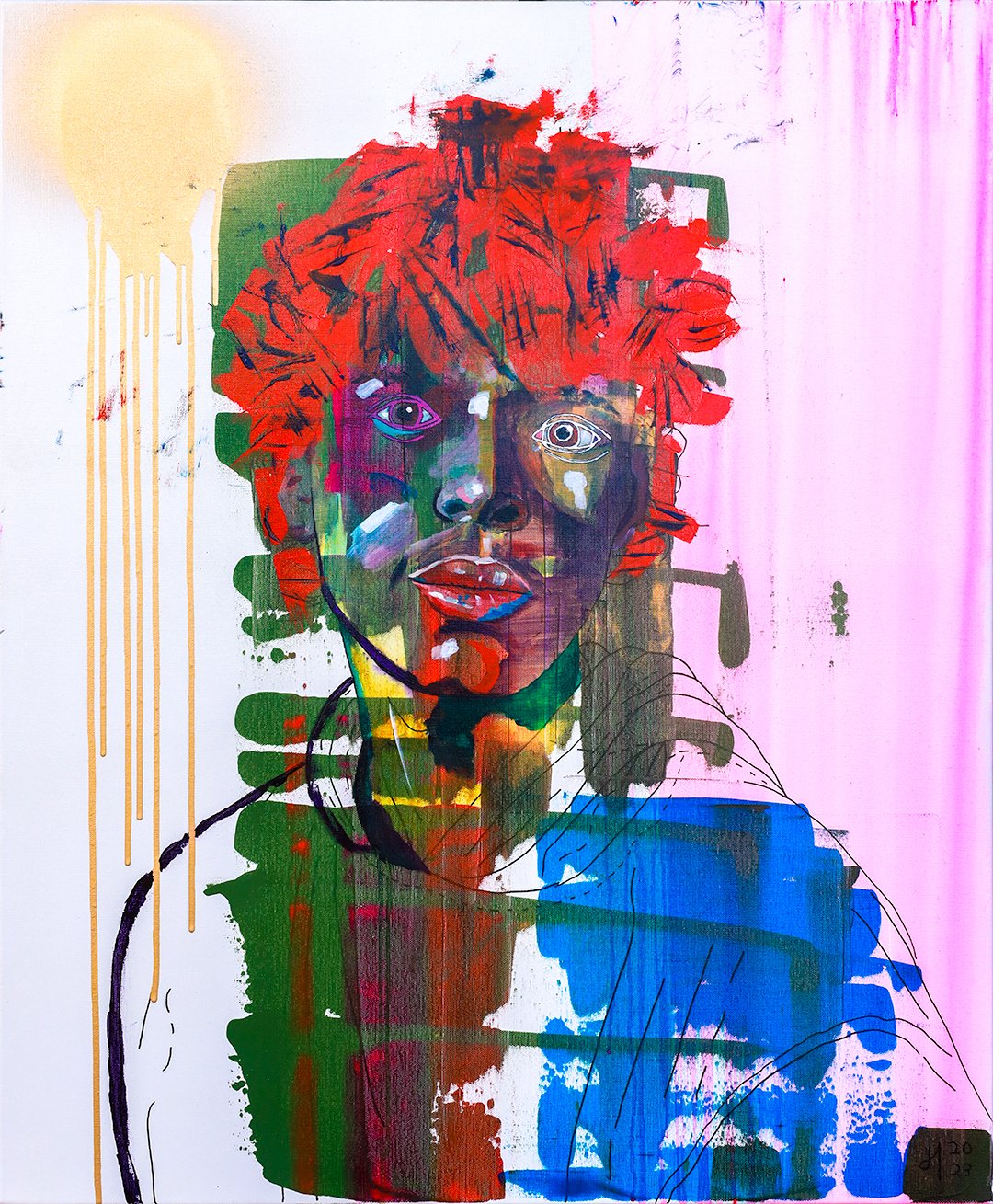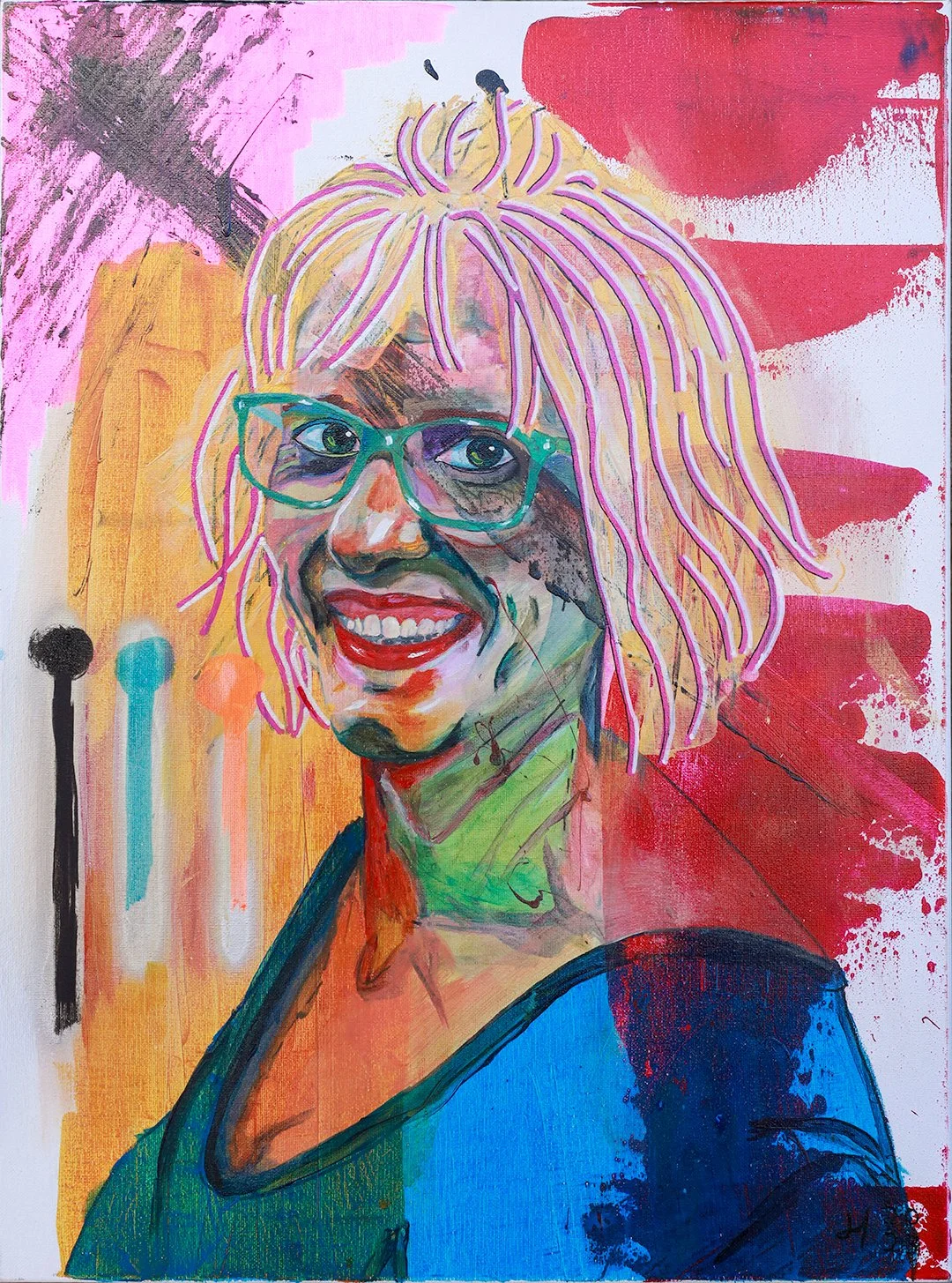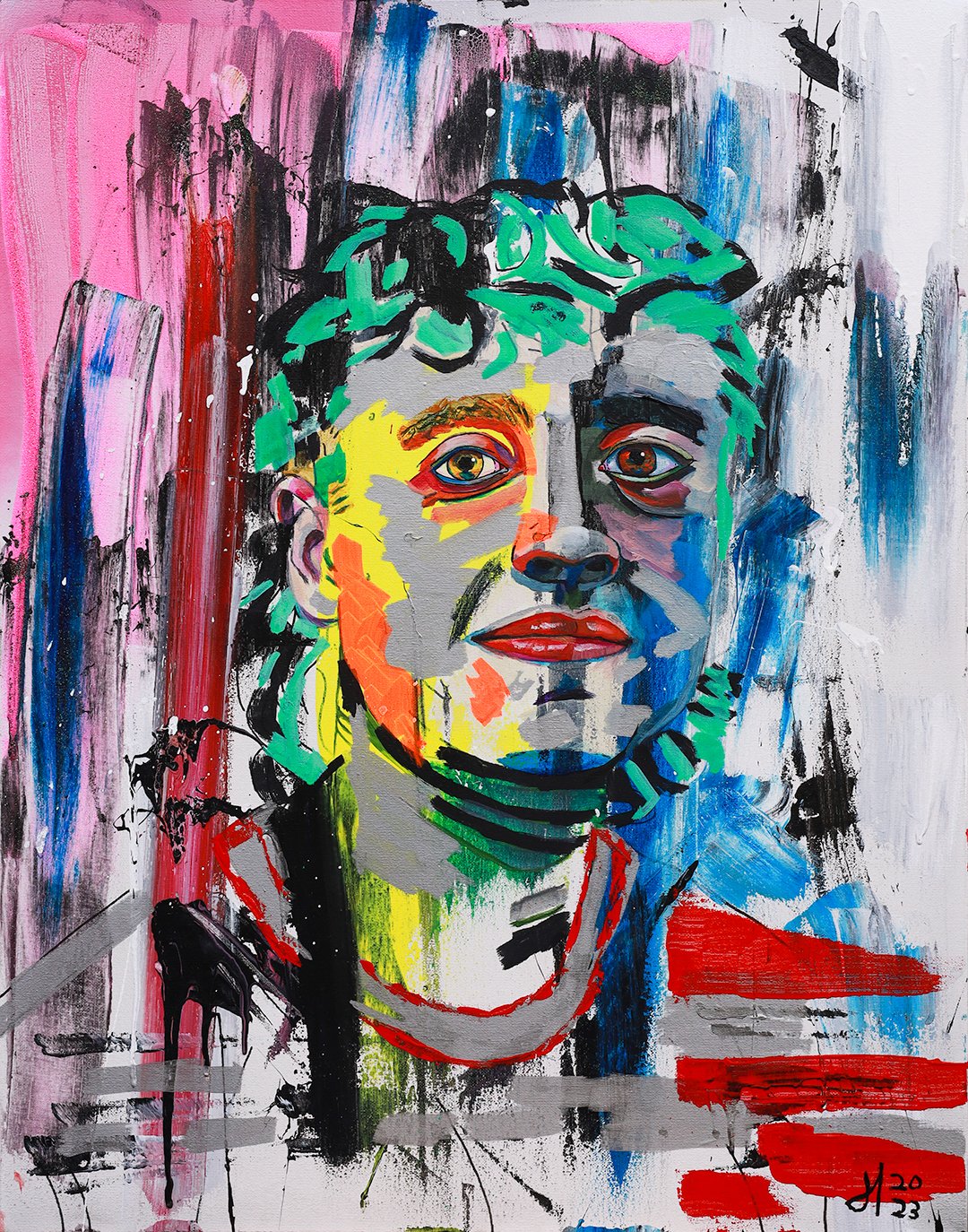“Portraits Don’t Sell”
I started painting portraits three years ago as a way to illustrate dreams I’d been having for decades. I didn’t exactly know where to start with painting my dreams, but I knew people were a critical feature.
I started out watching tutorials on portrait painting. I did one self-portrait a day for seven days and got many of the typical mistakes out of the way early on.
And I continued to paint portraits. Portraits from photos I found on Pinterest, old photos I had taken, and some new people I did photoshoots of. Gradually, I started doing more portraits of people I knew and fewer of people I didn’t know.
This led to people coming to me and arranging commissions for me to paint them, loved ones, and even a couple of cats.
I put on my own solo show of 25+ HUGE portrait paintings in 2022. Overall, I’ve done over 175 portraits in under three years. I’ve included most of them below to celebrate my journey with you.
All the while, I was pushing on my dream of being a gallery artist. I knew the work was good. I knew the work was priced well. I knew that people were emotionally moved to sadness, anger, joy, and erotic excitement as they viewed my paintings… some even cried.
And yet, I got rejection after rejection. I didn’t understand the art world. I was doing my own work on overcoming decades of “othering” myself from the establishment due to what I remembered as being “snubbed” by galleries in my 20s. That young artist needed space to be heard, acknowledged, and heal.
I did that work.
And yet, my art was still not finding its way onto the walls of my soulmate collectors. I didn’t know why. It took traveling 7,000 miles to another culture in another land for me to finally understand what was happening.
I had the space to slow down and step out of the ‘victim artist’ persona I had been letting run the show and into a creator. I hired two different professional artist business coaches. I stepped up the pressure on finding a way to sell the first ten paintings I did in Aotearoa New Zealand before my 91-day scouting trip ended.
The time pressure helped me focus and listen. Maybe it was the difference in culture, maybe it was just the right time, or maybe I finally started listening. I got the answer I was looking for. It wasn’t the answer I expected, and I don’t know what I’ll do next.
The answer is simple. Portraits don’t sell, at least not in galleries, at least not very often.
The reasons given varied. The galleries might not even know the real reasons why portraits don’t sell. Art is a mystery even to those who create it, but the overall theme is this.
People want to see themself in the art they view. They want to insert themselves into the story.
Humans are excellent at putting a single label on everything we see. Even as far back as 6,000 years ago, in the myth of Adam & Eve from Judaism, Islam, and Christianity, one of the first tasks Adam did was to name all the animals. We are good at putting a one-word label on every object, plant, animal, and human we see.
As societies, we are socialized into objectifying certain types of humans into single-idea tropes. Athletic man bare-chested and flexing, sexy young innocent woman, old wise guru with a beard, evil old witch with wrinkles, strong matriarch, homeless addict, playful child, Hollywood leading man, or bombshell starlet are objectified wrappings over populations of similar appearance.
These objectified and easily labeled categories of human are easier for people to insert themselves into the story of. We are socialized into a pre-knowing of how we should relate to each labeled human; fear, jealousy, lust, reverence, disgust, or joy.
These are the types of paintings people can easily relate to, and the type of painting people buy. It’s why there are millions of paintings of Marilyn Monroe up on the walls of people all over the world, and very few of the similar-looking corner barista working their way through college with a much more interesting life story.
This also explains why paintings I’ve done from reference photos of typical-looking “clothes hanger” runway models have wide appeal when compared to similarly artistically stunning paintings of “regular” humans. The “clothes hanger” runway model types are easier for us to objectify and insert ourselves into the story of.
I paint all types of people, especially people at the edges of society who don’t fit into any standard mold. The story and unique essence of each person I paint comes through. These are not archetypes, tropes, and easily objectified humans. By all reports I’ve gotten, these portraits don’t sell.
I’m reminded of a saying from a mentor of mine “Don’t go looking for oranges at the Birkenstock store.” It’s time to stop looking in the wrong places for my art business partners and soulmate collectors.
So now what?
Well, that’s the wrong question, I know. The right question is, how do I want to be with this new information?
For today, I don’t know.
